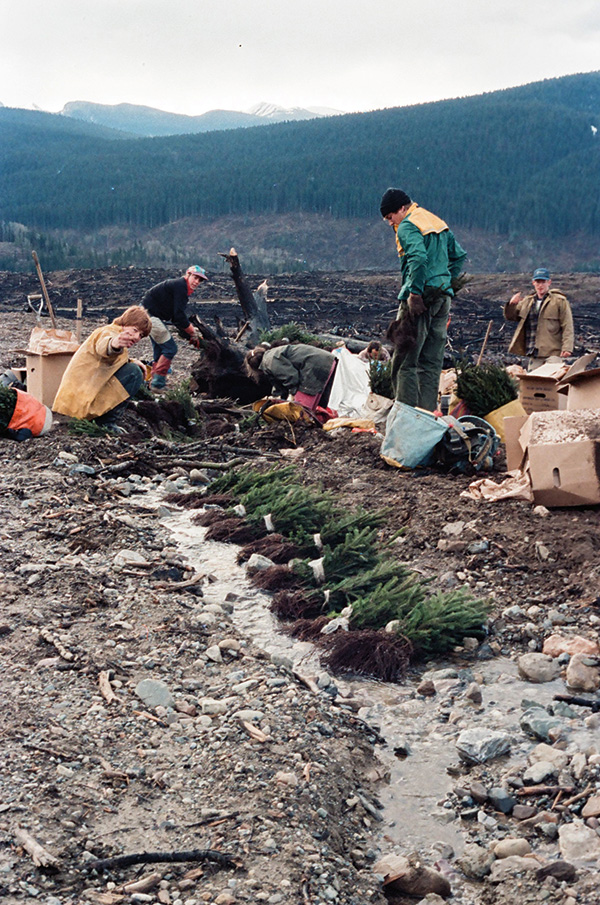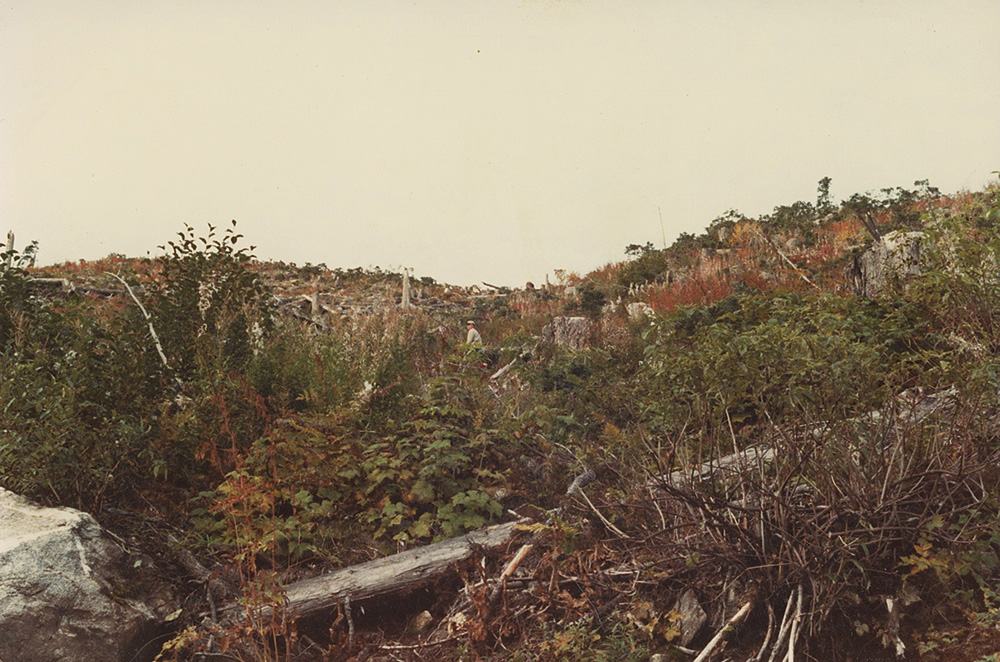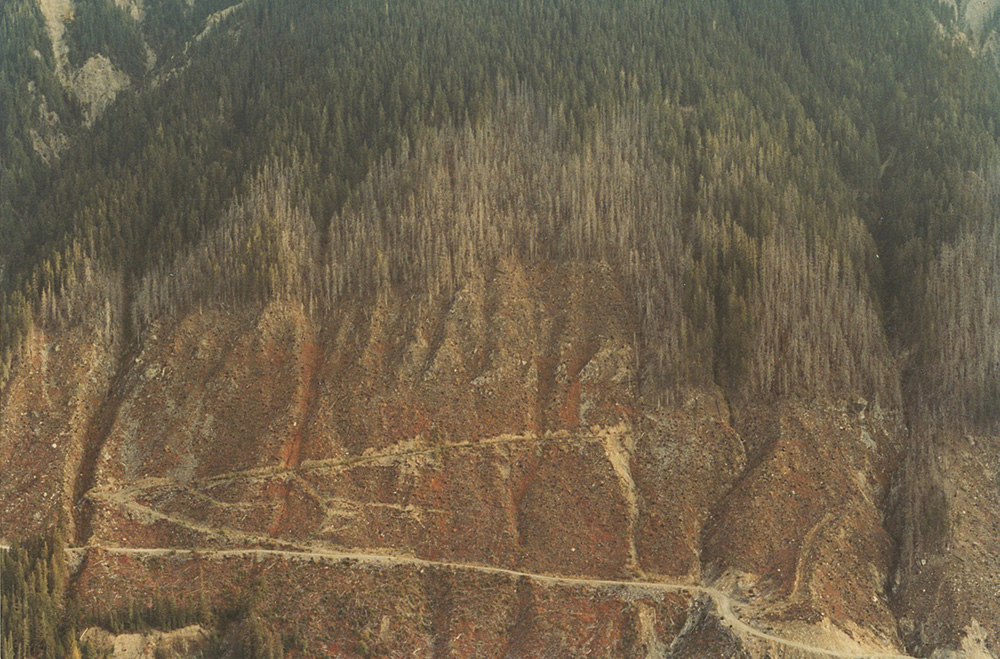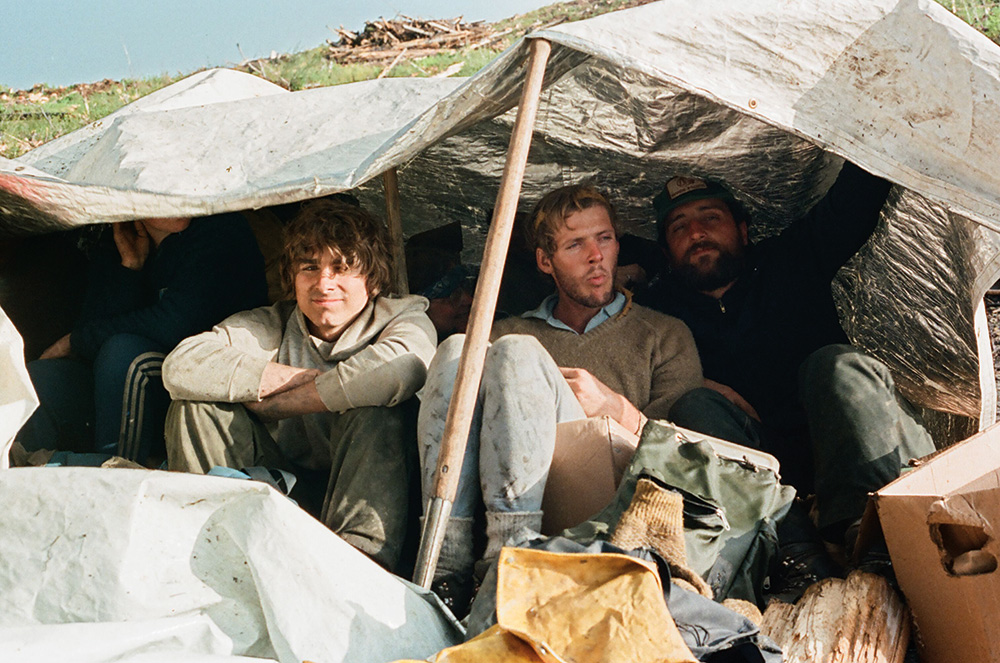- Highballer
- Harbour Publishing (2019)
From the isolated inlets of B.C.’s coast to remote bush camps across Alberta, Greg Nolan planted over 2.5 million trees during his 27-year tree planting career.
Nolan reflects on the highs and lows of working in the tree-planting industry for nearly three decades in his new memoir, Highballer.
Uninterested in school and craving adventure, Nolan embarked on his first tree-planting season at age 19 in 1983 near Purden Lake, B.C. By the end of his first season, he was a highballer — the highest-planting tree planter on his crew.
He was noticed. Over the next few decades he moved from planter to manager, foreman and business owner.
Nolan encountered grizzly bears, extreme weather and rain, landslides and hostile loggers — and isolation.
The Tyee spoke with Nolan about top-secret tips on becoming a highballer, the physical and emotional demands of tree planting, how the industry has changed over three decades, and today’s most pressing tree-planting issues. Our interview is edited for length and clarity.
The Tyee: What kind of person does it take to become a tree planter?
Greg Nolan: Being athletic helps. I like to run, cross-country ski, do a lot of endurance-type activities. It’s often said that tree planting is as much a mental endeavour as it is a physical one and I’d have to agree with that. As a manager and a contractor, I’ve hired triathletes that just didn’t make the cut. I had five triathletes that I handpicked that I thought would succeed. Every single one of them quit because they couldn’t do it. It takes a mental attitude. It takes a real stubbornness. You’ve got the physical thing, you’ve got the stubbornness, and the competitive aspect.

In Highballer, you describe a rainy, cold day where you applied a mixture of cayenne pepper and petroleum jelly to the insides of your gloves to keep your hands warm. What are some other top secrets to become a highballer?
Carb-loading in the evenings. They say that a highballer expends more calories in a day than a marathon runner will in a full marathon. They’re expending probably 7,000 or 8,000 calories a day — something ridiculous. So your meals, you really need to powerload your calories in the evening, and then when you wake up in the morning, have a light breakfast. Your meals throughout the day are generally just fruit, water and some complex carbohydrates, like whole-grain crackers... [another] thing is music. I don’t know what I would have done without music in my ears. There were days where I would plug in music and I wouldn’t turn it off until the trucks came for me at the end of the day. That really helped. Good music though — it’s got to be pounding, like techno.
When faced with challenges surrounding survival, isolation and drama, how did you push through?
During the really beleaguered times when, physically, you had hit a wall, mentally, you had hit a wall — probably weeks before your physical body had broken down — those were times when you relied on your programming. I remember times when I would have a difficult time getting out of bed. The trucks leave at 7 a.m. sharp, and its 10 minutes to 7 a.m. and you haven’t even crawled out of your sleeping bag. You rely on that programming to get your body in gear. You go through the motions. And if you keep going through the motions, eventually you catch your wind. Every single morning you have to figure out ways to trick your mind back into action. For me, very often it was the competitive thing where I would see somebody that was really hauling butt on the slopes, and there was no way that person could beat me. And that was my competitive attitude.

Why did you stay in the industry for nearly three decades?
It sort of became a lifestyle choice. It was nice being able to start in late January, early February, book off in mid- to late-June, take a break in the summer, go back for a summer plant for a month or so, and then have the rest of the year off. Having made enough money to be comfortable, and to travel, just that freedom. It was a lifestyle-type thing.
It was also a bit of an addiction. I remember as a planter making the phone calls to see who had what in terms of tree-planting contracts. The adventure, for sure.
And the people too! A lot of the friendships that you form become really tight, and you kind of miss that in the off season because you say goodbye to these people when the planting season is done. I suppose when you get back together with them in the early spring, it’s almost like a family reunion of sorts.
Have you ever revisited any of the sites you planted? Do you think about your trees now?
Oh, I do. I’m really fortunate... I believe it was 1989 when I planted a cutblock right on the Trans-Canada Highway outside of Golden. Heading toward Kamloops, on the right-hand side of the highway, there’s a rest stop right there where the cutblock starts. I visited that cutblock in the mid-‘90s, and it was a really surreal experience. The second I set foot on the piece of ground that I worked, I remembered this distinct stump that was in my way. I followed the area and I looked at my trees and they were all about eight feet tall I guess at the time. They started out as seedlings, probably one foot high.
Today, I’m curious. I haven’t stopped at that spot. I’m always in such a rush when I take that piece of highway. Someday soon I’m going to stop and walk through that area. I’m sure the trees are 40 feet high at this point. I do think about the trees. Most of them I can’t access because they’re up the inlets and a lot of them are on helicopter settings and there’s no way to get up there. I do think about them, though.
What are today’s pressing issues in the tree-planting industry?
This is kind of political, but I was put in charge of a lot of clearcuts, especially as a manager and also as a contractor, of planting areas that should never have been harvested in the first place. I encountered cutblocks that had almost no soil on them. How trees grew there originally was some sort of mystery of nature. But for us to go back there and attempt to re-plant a forest in only two or three inches of soil... once the seedlings reach a certain height, all it’s going to take is a good windstorm to come in and knock them all down.

I’ve actually seen cutblocks like that that we have planted, where shortly after planting them, we were instructed to go back and fix the trees that were flat on the ground. That’s because we couldn’t sink the roots into deep enough soil. I’m not saying that was a pervasive thing, that it happened every day, but when it did happen, it really stood out in our minds — why are we doing this? Why did they harvest these areas in the first place?
I’d also like to see tree planters make a wage that they deserve. I would be surprised if the average tree planter makes more than $200 a day, which is not very good. Inflation adjusted, we were making the equivalent of five, six, seven hundred dollars a day in today’s terms. It’s appalling what a tree planter is making today. I suppose a lot of them don’t know any better. They don’t understand that this used to be a really lucrative profession.
How has climate change influenced tree planting?
Harvesting blocks in certain areas that don’t get the rainfall that they received in prior years is a real concern. You need rain after you plant a seedling. You also need the warmth to create that root growth. If the soil dries out, the root systems dry out, and the tree dies. It’s as simple as that. You’re putting trees into the ground just as an exercise in the book to mark it off as being planted. You come back in four or five years, chances are there’s not going to be anything there in terms of a conifer. Climate change is a huge factor right now and nobody can argue against that. I have a couple very good friends in the Ministry of Forests that actually travel these road systems, and they see these cutblocks on a daily basis, and they talk about the mortality rates as being just ridiculous. These trees are simply not going to survive.
I’m in the Alberni Valley right now, staring out at some cutblocks. They all look pretty dry to me. The snow level... there should be a snow level that is visible, and I can’t see it anywhere. I can’t see a speck of snow, even on the highest peaks.
You mentioned you fell in love quite a few times while tree planting. Did any of your tree planting loves ever materialize into anything long term?
A 13-year relationship later in my career produced a beautiful little girl, my daughter Brigit. That was profoundly meaningful.
The one thing that I noticed is a profound sense of loneliness kind of sets in when you’re out there and you’re sleeping alone in your tent. It’s a natural, biological instinct I think, just to couple up with someone to share the nights and that sort of thing. I was a kid. I was immature, I always wanted more. I was a bit of a naive kid. And the women that I coupled up with were more mature, more worldly, and they knew how to set boundaries better than I did. Those relationships I described in the book, I wish they had blossomed into something, especially the first one I described. I still think about her today.
Any last comments you’d like to share with Tyee readers?
It is a job that... if you are in remote areas, areas cut off by the vast majority of civilization, areas that you have to travel into by water or air, it’s like a different type of universe. ![]()
Read more: Labour + Industry, Environment
















Tyee Commenting Guidelines
Comments that violate guidelines risk being deleted, and violations may result in a temporary or permanent user ban. Maintain the spirit of good conversation to stay in the discussion.
*Please note The Tyee is not a forum for spreading misinformation about COVID-19, denying its existence or minimizing its risk to public health.
Do:
Do not: